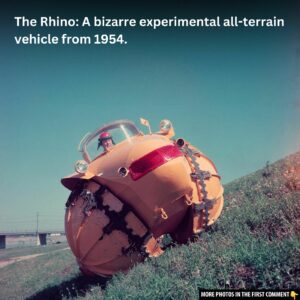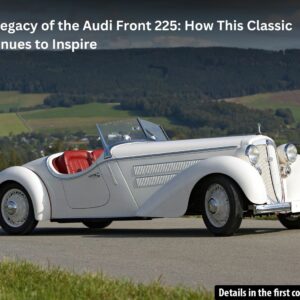The 1960s was a time of vibrant change, especially in the world of automobiles. It was a decade of bold ideas and ground-breaking innovations that pushed the limits of design and technology. Among these pioneering advancements, Goodyear’s illuminated tires stood out, capturing the imagination of the public and shaping the future of automotive design—albeit for a brief moment. These glowing, translucent tires, created using the innovative material Neothane, were a testament to Goodyear’s ambition and a glimpse into what the future of driving could look like. But while the glowing tires didn’t make it to the market, their legacy lives on as a symbol of futuristic car culture.
The Pioneering Technology: Neothane and the Translucent Tire
The idea of glowing tires may seem outlandish today, but in the early 1960s, it was a visionary step forward. Goodyear Tire & Rubber Co., a leader in the tire manufacturing industry, developed a new compound known as Neothane. This synthetic material combined the durability of rubber with the versatility of plastic, allowing Goodyear to produce a tubeless, translucent tire. Neothane’s ability to let light pass through was the key to Goodyear’s bold experiment. They dyed the tires in vibrant colors—red, green, blue, and yellow—and added 18 light bulbs inside the rims. These bulbs gave the tires a glowing effect, illuminating the road with an eerie and futuristic glow.
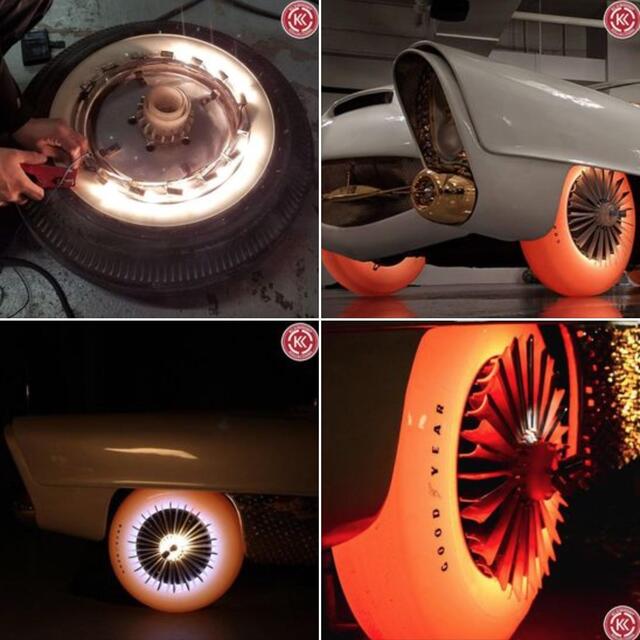
This innovation was not just about aesthetics. The ability to light up the tires meant they could serve a practical function as well. The lighting could act as turn signals or brake lights, making them not only a visual statement but also a safety feature. This clever integration of style and function was a hallmark of Goodyear’s design philosophy.
Video
Watch That Time Goodyear Made Glowing Tires to learn about Goodyear’s innovative glowing tires from the 1960s. A fascinating piece of automotive history!
Goodyear’s Public Showcase: A Car Parade of Light
To drum up public interest, Goodyear decided to showcase their glowing tires in some of the most iconic cities in the U.S. The company mounted a set of glowing red tires on a Dodge Polara and took it on a drive through downtown Miami. They did the same with a Chrysler Silver 300 in Manhattan, parading the car around Rockefeller Plaza, Times Square, and even the United Nations. The public was astounded. It was the ’60s, a time of cultural revolution, and this automotive spectacle fit perfectly into the futuristic vibe of the era.
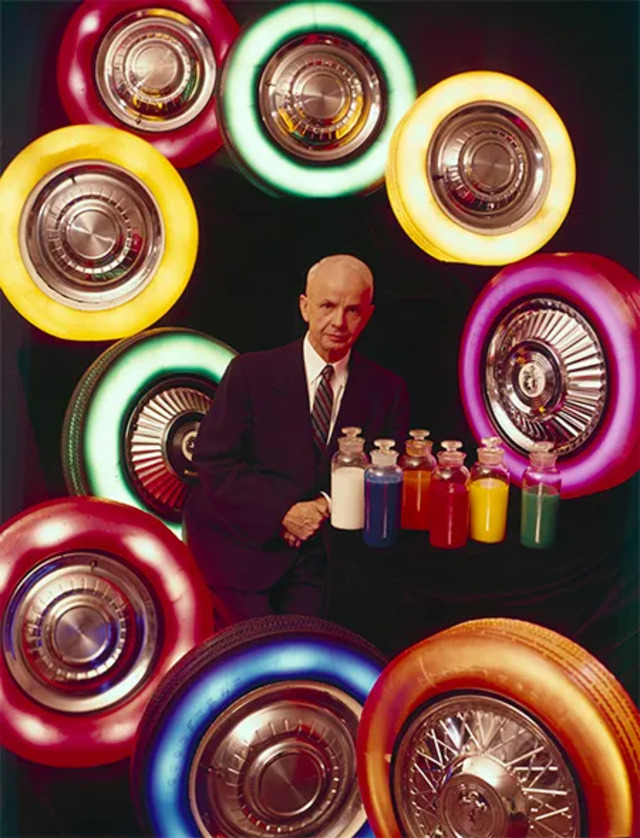
However, these glowing tires were not meant to go on sale. Goodyear created them as a showpiece—a prototype that demonstrated the company’s ingenuity. Despite their appeal, the tires never made it to mass production. Goodyear’s experiment was never intended to become a mainstream product, though the glowing effect fascinated many at the time. A local custom car builder, Jim “Street” Skonzakes, was given a set of the tires after he caught Goodyear’s attention. Skonzakes outfitted his futuristic car, the Golden Sahara II, with the tires, showcasing them at various car exhibitions and events.
The Golden Sahara II: The Iconic Car with Glowing Tires
The Golden Sahara II was no ordinary car. Designed as a futuristic vehicle, it featured a variety of cutting-edge innovations, including a remote control driving system, automatic doors, and even a vibrating massage seat. The car’s body was made of aluminum, and it was designed to reflect the space-age aesthetic that was taking hold in the 1960s. But what made the Golden Sahara II truly stand out were the illuminated Neothane tires.
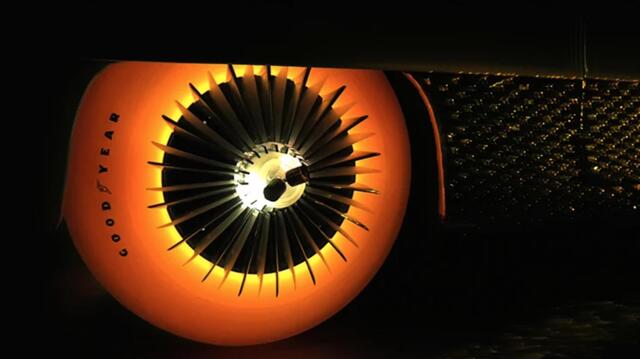
These glowing tires became an iconic feature of the car, earning it a place in pop culture. The car even made an appearance in the 1960 comedy film Cinderfella, showcasing its stunning design, including the tires. For several years, the Golden Sahara II toured across the U.S., delighting crowds with its futuristic features.
However, as time passed, the Golden Sahara II faced wear and tear, and its owner, Jim Skonzakes, retired the car to his collection. After Skonzakes’ passing, the car was auctioned off, and eventually purchased for $350,000 by a collector, Robert Olson. The Golden Sahara II was in rough condition, but with the help of restoration experts, the car was brought back to life, complete with a new set of functional illuminated tires.

Challenges and Setbacks: Why the Tires Never Hit the Market
Despite their popularity and the public’s fascination with them, Goodyear’s glowing tires faced several insurmountable issues that prevented them from going into full-scale production. The most obvious problem was the cost. Neothane, while innovative, was an expensive material to work with. Manufacturing costs were high, and it proved difficult to scale the production to meet the demands of the mass market.
But the real deal-breaker was performance. The tires didn’t perform well in wet conditions. They lacked the necessary grip on slippery roads, and under hard braking, they would melt due to the low temperature of the material. In addition, road debris and wear and tear would quickly cover the tires in soot, making the glowing feature essentially useless after just a few miles of driving. Safety concerns also played a significant role in the demise of the tires. For a product designed to enhance the driving experience, the tires simply couldn’t meet the functional requirements for safe driving in everyday conditions.
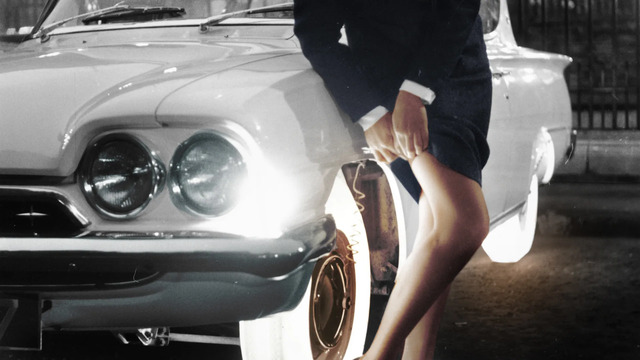
The Revival of the Golden Sahara II: Restoring the Glowing Tires
Fast forward to 2019, and the Golden Sahara II was undergoing a major restoration. The car was sold at auction to a collector, and as part of the restoration, Goodyear agreed to provide new translucent tires. The restoration team worked tirelessly to bring the car back to its former glory, and the addition of the glowing tires helped complete the vision of what the Golden Sahara II had been intended to be—a futuristic car of the highest caliber. The finished product was displayed at the 2019 Geneva International Motor Show, where it drew a great deal of attention.
The restored car, complete with its glowing tires, was a reminder of what could have been. Goodyear’s illuminated tires were a bold experiment that ultimately failed due to practical limitations. Yet, they represented a bold leap into the future—a vision of a world where the mundane aspects of driving could be transformed into something magical.
Legacy of Goodyear’s Glowing Tires: A Vision for the Future
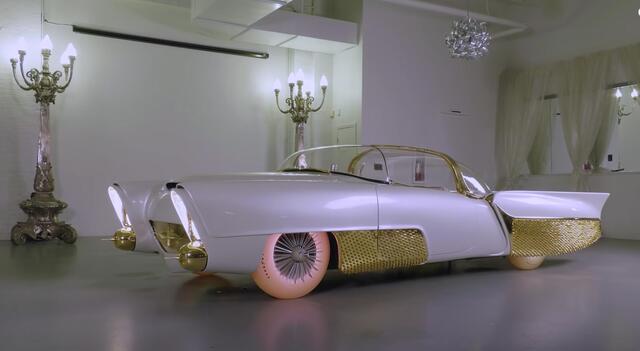
Though Goodyear’s illuminated tires were never mass-produced, they remain an enduring symbol of the creativity and innovation that defined the 1960s. Today, we may not have glowing tires, but the idea of transforming the driving experience through technology and design lives on in various forms—from the sleek electric vehicles of today to the bold innovations of tomorrow. Goodyear’s illuminated tires may not have taken the automotive world by storm, but their legacy continues to inspire engineers and designers looking to push the limits of what’s possible.
Conclusion: The Tire That Glowed with Possibility
Goodyear’s illuminated tires were a vision ahead of their time. While the tires themselves may not have been practical for everyday use, they served as a glimpse into the future of automotive design and innovation. The Golden Sahara II, with its glowing tires, remains a testament to what could have been—a bold and imaginative step forward that captured the spirit of the 1960s. And while the tires never became a mainstream product, their influence can still be felt today, reminding us that sometimes, even the most outlandish ideas can spark the imagination and shape the future.
Video
Watch Goodyear Commercial #2 (1960s) to see one of Goodyear’s iconic commercials from the 1960s. A nostalgic look at vintage advertising!


